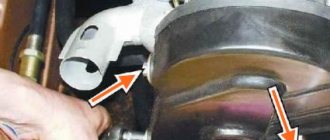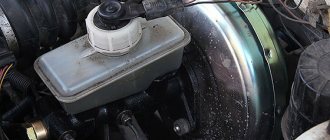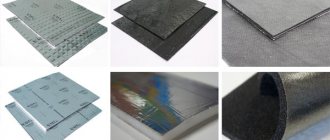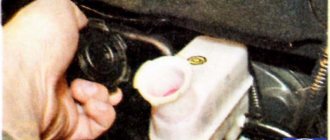10/18/2018 Category: Useful information
- 1 Are more springs better or worse?
- 2 Stiffness of spring elements
- 3 Which mattress is better - count the springs 3.1 A little mathematics
- 3.2 What is your weight?
There is a common myth that a good mattress is a hard mattress. Not really! More precisely, not for everyone and not always. A good mattress is one whose firmness ideally matches your parameters. As for spring models, the basic formula for ideal stiffness is made up of two factors: the number of springs in the mattress per bed and the stiffness of those same springs. Not the least important role is played by the arrangement of elements in the block, the quality of the assembly of the block, the quality of the insulating material and the upper flooring.
More springs - is it better or worse?
The first thing to discuss is how many springs a good mattress should have. The answer to the question remains the same - the more, the better. The argument that a large number of elements makes the spring block excessively rigid is true only in cases where we are talking about using a model made of rigid wire of a larger diameter for sleepers with low weight.
What affects the number of springs in a mattress? The number of elements is responsible for the orthopedic effect. The more springs per 1 m², the more accurate the load distribution over the surface and the better the line of support for the spine (the so-called point support).
Stiffness of spring elements
To say that the rigidity of a sleeping place depends solely on the number of springs in the mattress does not mean taking into account all factors. In fact, the rigidity of the springs themselves is responsible for the rigidity of the sleeping surface. There are 3 main groups of rigidity of steel elements - normal, hard (reinforced) and super-hard (super-reinforced).
Reference! The degree of spring stiffness in the block can be marked as F1 (normal), F2 (hard) and F3 (extra hard), or something else.
The stiffness depends on the thickness of the wire from which the spring is made. The degree of rigidity increases from group to group (from the first to the third) by an average of 30%.
How to check suspension springs yourself
06/24/2018 admin Comments No comments
There is a saying: forewarned is forearmed. It is always better to know about problems with your car from the beginning than to guess. If you suspect that the springs need to be changed, it is better to know the degree of wear in advance , so that in the event of a breakdown you do not have to urgently look for funds for repairs. Therefore, it is important to know how to check the suspension springs yourself. This will help you save on diagnostics, and is also useful when buying a used car, because you do not yet know the “norm” of the suspension condition for a given brand.
Which mattress is better - counting the springs
And yet, more specifically, how many springs should there be in a mattress? If we talk about mattresses with an independent block, at least 700 units per bed. 1000 and 2000 units per bed, respectively, are more preferable. The classic TFK block, with 500 units per bed, belongs to the category of moderately soft models and is suitable when an average-weight consumer needs a budget mattress option.
Reference! In the description of the characteristics, the manufacturer usually means an area of 1 m²x2 m² by the concept of a sleeping place.
It is worth repeating - it is important not to forget about the stiffness of the springs in the block. If the rigidity of the steel elements does not match the weight of the sleeper, it will not be possible to fully experience the orthopedic effect of the product. The block, which could provide excellent support for the spine, will turn out to be too rigid or vice versa.
A little math
The mathematics behind acupressure body support is extremely simple. The same area of the body in a mattress with standard TFK springs will be supported by two springs, while in a Micropocket - four or even more, which is certainly more effective. Therefore, the answer to the question of how to choose the number of springs in a mattress is obvious and, repeating itself, sounds: the more, the better. But... not forgetting to take into account the rigidity!
How much do you weigh
So, the number of springs per square meter in a mattress affects the orthopedic effect, and the stiffness of the steel and the number of turns affect the rigidity of the sleeping area.
In terms of choosing the rigidity of a sleeping place, you need to be guided by general principles and individual sensations (the so-called fitting). A person weighing less than 55 kg should consider models in the less-than-average firmness category (moderate-soft). For people of average build - weighing 60-90 kg - medium-hard ones are recommended. Weight over 90 kg requires reinforced options.
Knowing your weight category, taking into account the approximate recommendations and “trying on” several models (after lying on each for at least 5 minutes without a pillow), you can make a final decision.
Reference! For people with large weight differences, they produce models of mattresses with longitudinal zoning - Dual Zone (two halves with different degrees of hardness). This option involves various combinations of halves: standard + reinforced, super-reinforced + reinforced, super-reinforced + standard. It is possible to make a custom option taking into account individual wishes.
How to check suspension springs without dismantling?
In order to detect defects, you can do without disassembling the rack. First, you should measure the ground clearance at the front, rear and at each wheel. Perhaps the problem is associated with only one spring out of four, but they must always be replaced in pairs so as not to cause an imbalance in the operation of the new and already “worn-out” spare parts. A visual inspection is carried out after hanging the wheels using a jack or lift, when sufficient access to the rack is provided for inspection.
It is advisable not only to inspect, but also to feel the surface of the coils with your fingers. Look for cracks, signs of rust, and scratches caused by the coils rubbing against each other when fully compressed. If such signs are observed, the element requires replacement, since it is already inoperative.
Is the number of springs in a mattress really important?
When it comes to a good mattress, everything is important! The more springs in the mattress, the better the orthopedic effect and the more precise the support line. It is even more important to pay attention to the degree of spring stiffness in the mattress block and select it in accordance with your personal weight. In the double version, for partners with a large weight difference, it is better to pay attention to one of the models with the Dual Zone option.
A model with a large number of elastic springs in the case of a sleeper weighing less than 55 kg will not be able to fulfill its intended purpose for the reason that it simply will not bend under the low weight. But the reason will not be the number of springs, but their increased rigidity. Likewise, a person weighing over 90 kg will not be comfortable with the normal stiffness of the spring elements (insufficient support), but requires reinforced or super-reinforced ones.
Reference! People with low weight make sense to pay attention to the improved version of IQ Spring.
Radical check of the condition of the suspension springs
In order to accurately determine the condition of the springs, they must be dismantled. After this, you need to measure their height and compare them with new springs. If you thought that you would have to buy suspension springs to compare the height of the old and new ones, then I will answer you - this is not necessary at all. It’s enough just to remove your old ones and check with the seller, you can even over the phone what the height of the new springs is. Or go to the manufacturer's website and compare the height of old and new springs.
Summing up
To summarize the above, several points can be highlighted. The number of springs in the block affects the orthopedic effect of the mattress. Classic TFK is a budget option for people with low weight. The optimal quantity is 700, 1000 or 2000 units per bed (1m²x2m²). The more springs in the mattress, the better. However, with one thing!
It is important to pay attention to the stiffness of the spring elements, which can vary from neutral, moderately soft to ultra-hard. For people weighing less than 55 kg, moderately soft models are recommended, from 60 kg to 90 kg - medium-hard models, over 90 kg - reinforced options.
The cellular pocket is considered more reliable and advanced (compared to the in-line one). This is already in the area of the layout of springs in the block.
Flooring materials are another important point. The service life and quality characteristics of the mattress are significantly affected by:
- use of low density foam rubber;
- laying coconut coir directly on the springs (without a felt layer);
- using soft felt (instead of hard) as a flooring, insulating the spring block from the upper fillers;
- poor-quality connection of layers (sizing).
Adding to the sadness is the fact that counterfeits and deception from the manufacturer are ubiquitous. The lack of a lot of information (hardness of steel, brand of foam, etc.) becomes a frequent cause of disappointment with the purchase. Unfortunately, it is not yet possible to completely protect yourself from this danger. Counterfeiting is the scourge of society, and deception is a widespread phenomenon. Perhaps purchasing a mattress from a global brand, a factory that cares about its reputation, or ordering from a bona fide private workshop will provide some guarantees. We can only hope for this!
WORKSHOP: spring control. Fatigue limit
WORKSHOP: spring control. Fatigue limit
A very observant client once came to us!
While his car was being repaired, he pestered me with a question: why did the springs, which had sagged over three years, turn out to be the same length as the new ones without load? I warned him against premature conclusions: with today’s quality of spare parts, you can buy anything, even “raw” springs, which will shrink immediately after installation, or “creeping” springs, which will shrink in six months or a year. And our conversation is about the right springs. These are what the client described. Working in the elastic zone of the material (Fig. 1), even after the collision of the coils, they return almost to their original dimensions. Why does the old spring, when loaded, shrink more than the new one? She's more pliable now. Imagine that its rod has become thinner - naturally, the compliance will increase, and the length without load will remain the same. Something similar happens in a car. Its first enemy is corrosion. Rust that has eaten a layer of 0.15 mm from the surface of a 10 mm wire reduces the cross-section by 6%. Even more insidious is the so-called fatigue of the material: microcracks appear from vibrations and alternating stresses, they grow... and after a strong impact the spring breaks. Sometimes - into several parts at once, since there is usually more than one dangerous crack.
To delay disaster, the rod is made smooth - without marks or depressions in which stresses are concentrated and can far exceed the calculated ones. In addition, the surface is hardened, increasing strength. And what? Rust ruins everything. Ulcers appear, giving rise to cracks. Fatigue accumulates the faster the stronger the variable load. Driving on broken roads, unbalanced wheels, play in the suspension and steering, faulty shock absorbers - all these are the enemies of not only springs, but also suspension units and power elements of the body.
Now imagine that the spring is cut with cracks here and there. Naturally, not the entire section of the rod “works” near them, but only part of it—the part behaves like a softer one. Upon careful examination, it is possible to discover that near highly developed cracks the shrinkage is greater - the increased stresses sometimes reach the yield point and plastic deformation begins - a harbinger of failure (Fig. 2). Get that spring off the car! But a couple of springs that look like new ones make you distrustful. Well, let's check them objectively: load the spring and measure the shrinkage. For VAZ 2110 parts under a load of 325 kgf, the length of the front spring H (see Fig. 3) must be no less than 201 mm (182 mm for the “European”), and the rear - no less than 233 mm (223 mm for the “Euro”) . These indicators are for the softest ones - their hardness groups differ in color marks - take this into account when purchasing (see ZR, 2005, No. 8, p. 190).
Driving on old springs is risky: uneven settlement on the right and left results in slippage. The suspension works poorly - because the characteristics of the springs and shock absorbers are mismatched.
The springs responsible for the operation of the engine valves also have a hard time: if the “ten” traveled 100 thousand km only in fifth gear, the valves would complete about 80 million cycles. In fact, even more. Breakage of these springs is a dangerous defect (see photo). Having lost at least one, the valve begins to close more slowly and at high speeds does not keep up with the piston. If it doesn't have special grooves on the bottom, it hits the valve. Catch up, but damage is not excluded.
Particularly insidious is the breakage of the internal spring into several parts - at medium engine speeds there is no noise! But at high speeds you can hear the piston catching up with the valve. Immediately release the gas - and get it repaired! If a spring breaks into two parts, you can usually hear them. The knock is similar to a valve knock (not everyone can tell the difference). Unfortunately, I have to repeat once again: the quality of these springs has also deteriorated in recent years. How to reduce the risk of breakdowns? Apparently, every time you disassemble the timing belt, it is worth checking the elasticity of the springs. The principle is the same as when checking suspension parts, and you will find the necessary data in repair books.
Almost everything that has been said is true for other car springs, on the characteristics of which the operation of various devices depends - pressure reducing valves of the oil pump or filter, fuel pressure regulator, brake cylinders, etc.
The client listened to all this and became thoughtful. In fact, how often have you seen that services attach great importance to this “nonsense”?











